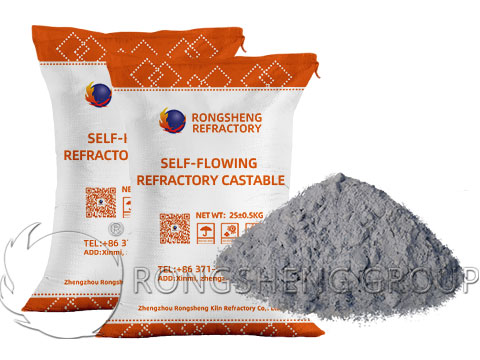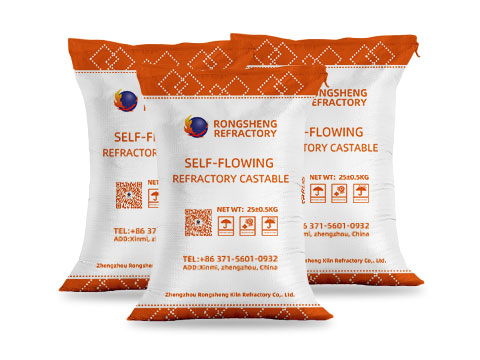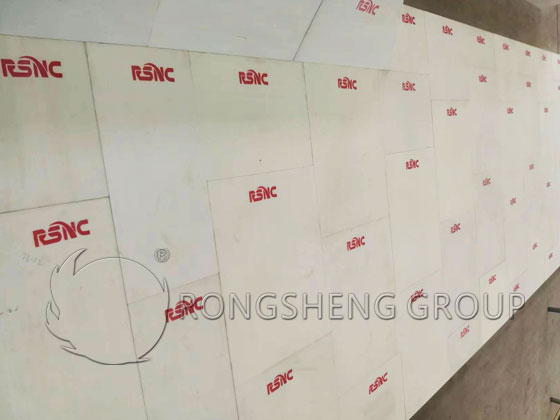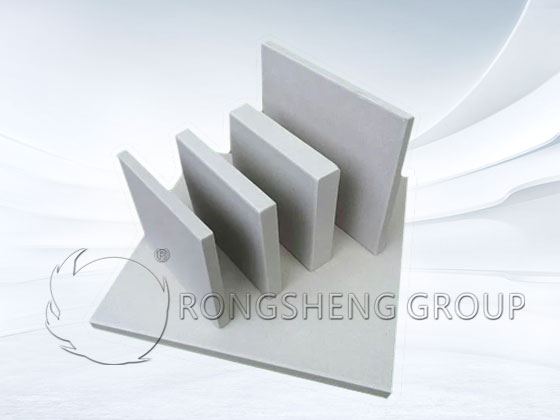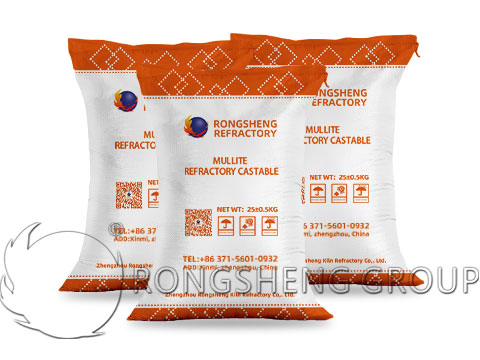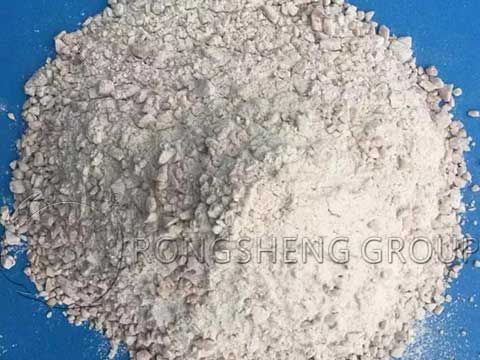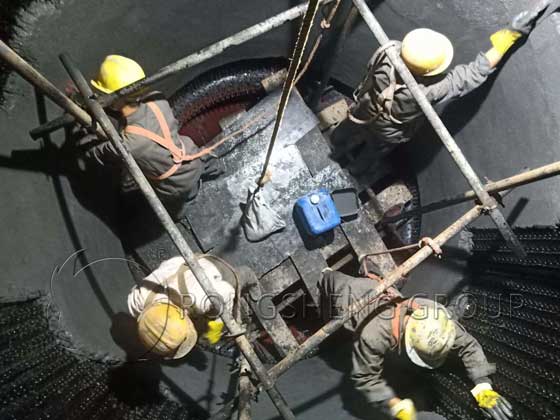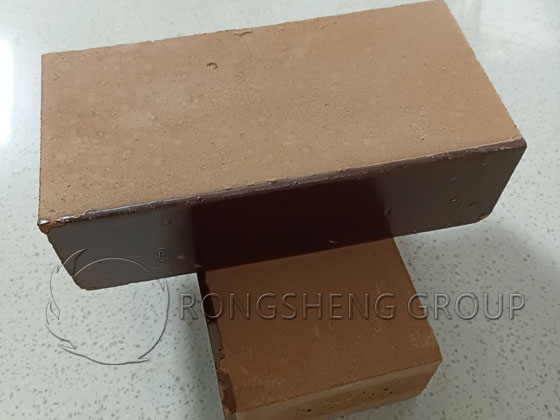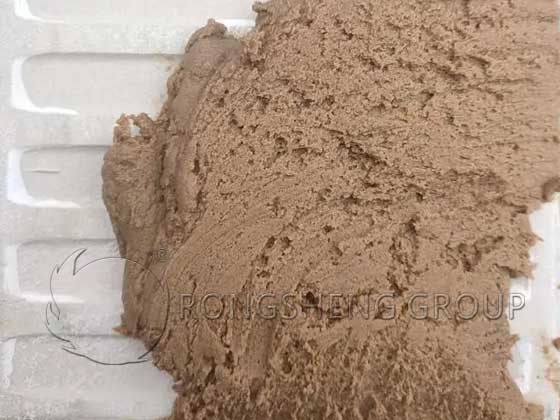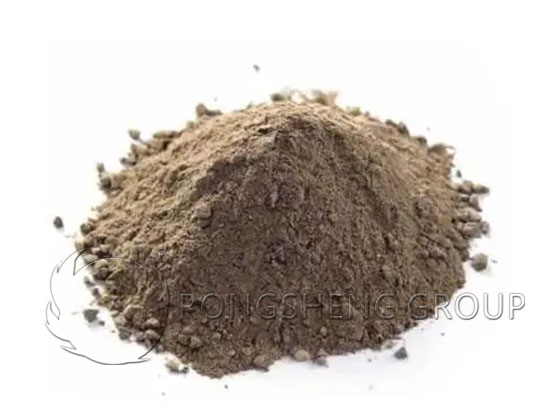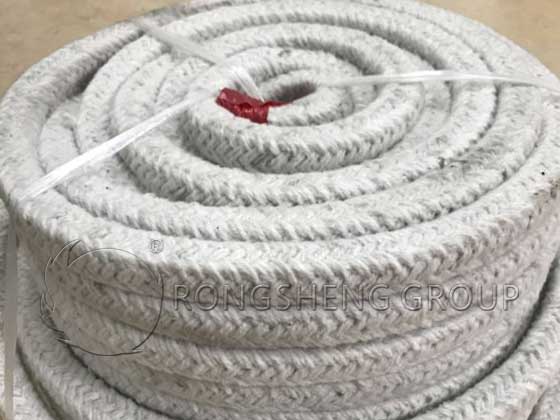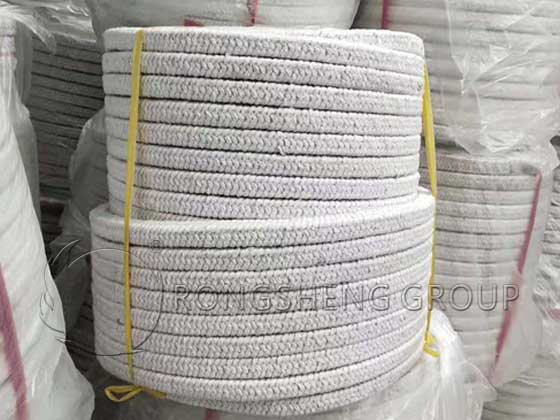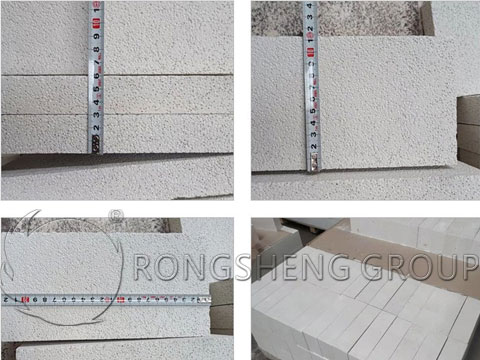In the production of rotary kilns, harmful components such as alkali, sulfur, and chlorine from raw materials and fuels form alkali sulfate and alkali chloride in the high-temperature zone and escape with the kiln gas. In addition to erosion and damage to alkaline bricks in the firing zone and transition zone. When it reaches the kiln tail smoke chamber, decomposition furnace, preheater, etc., it condenses and enriches due to the temperature drop. It can penetrate into ordinary clay bricks and react chemically with the brick body to generate expandable minerals, causing the clay bricks to crack and peel off, causing alkali cracking damage. Due to the high temperature of the clinker leaving the kiln, alkali will continue to evaporate from the clinker, corroding the refractory clay bricks of the kiln head cover at the hot end of the grate cooler, causing alkali cracks.
Alkali-Resistant Bricks for Rotary Kiln
Refractory clay bricks with an Al2O3 content of 25% to 45% allow alkali to react quickly with the bricks after condensing on the brick surface. A high-viscosity glaze layer is formed, which seals the channel for alkali to continue to erode into the brick body, thereby preventing alkali cracking. If the atmosphere in the kiln contains a lot of chlorine, the SiO2 content in the bricks can be appropriately increased to increase the ability of the brick surface to bond with chlor-alkali and make alkali-resistant clay bricks that are resistant to chlor-alkali erosion. In order to adapt to the erosion of the lining material by the airflow carrying clinker dust in the tertiary air duct of the precalciner kiln, high-strength alkali-resistant clay bricks can also be made. In order to meet the heat insulation requirements of the kiln body and preheater barrel, lightweight alkali-resistant bricks can also be made.
High-strength alkali-resistant brick products have the characteristics of high strength, stable volume, resistance to penetration, and good resistance to alkali erosion. High-strength alkali-resistant bricks are mainly used in cement kiln preheaters, decomposition furnaces, tertiary air ducts, and other parts.
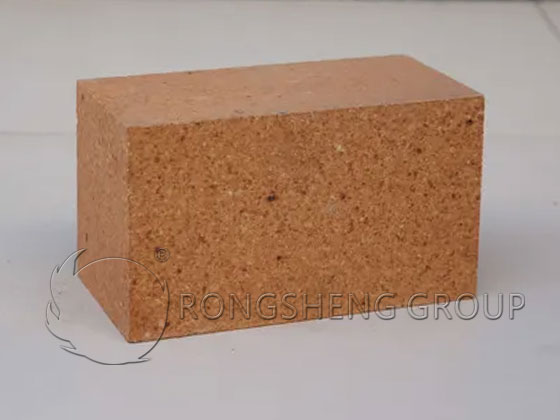
Introduction and Analysis of the Characteristics of Alkaline Refractory Bricks
Resistance to erosion. Alkaline bricks have good corrosion resistance against metallurgical slag, cement clinker, glass kiln ingredients, and ash. Different heat media have different effects on alkaline bricks. In a strong alkaline environment, such as the cement kiln firing zone, the corrosion resistance of cement clinker is in the order: magnesia dolomite bricks>magnesia chrome bricks>magnesia spinel bricks. In converter and electric furnace linings, magnesia bricks with high CaO/SiO2 are better than magnesia bricks with low CaO/SiO2. In the glass kiln regenerator grid, magnesia bricks with a low CaO/SiO2 ratio are better than corresponding magnesia bricks with a high CaO/SiO2 ratio. When producing stainless steel in an AOD furnace, the slag basicity is less than 2.2, and the slag resistance of magnesia-chrome bricks is better than that of magnesia-dolomite bricks. The slag alkalinity is greater than 2.2, and the slag resistance of magnesia dolomite bricks is better than that of magnesia-chrome bricks. In heavy non-ferrous metallurgical furnaces, the ability to resist FeO-SiO2 slag: magnesia chrome bricks > magnesia bricks > magnesia spinel bricks > magnesia dolomite bricks.
Water resistance. Compared with high alumina bricks, clay bricks, and silica bricks, alkaline refractory bricks have the worst hydration resistance. Among alkaline refractory bricks, magnesia-calcium bricks have the most severe hydration tendency and are directly proportional to the CaO content in the product. Therefore, when using alkaline bricks in production, storage, transportation, and masonry, attention should be paid to waterproofing issues.
Vacuum resistance. The vapor pressure of refractory materials is very low at normal temperature, but when there is high-temperature decompression work (such as vacuum processing of molten steel in RH and VOD refining furnaces), the refractory materials are lost due to volatilization. The volatilization rate is proportional to the vapor pressure of the refractory material. The greater the relative molecular mass of the gas phase, the greater the volatilization amount. As refractory materials for vacuum furnaces, calcareous and dolomite products have better vacuum resistance than spinel bricks, magnesia bricks, and magnesia chrome bricks.
Conductivity. Refractory materials (except carbon-containing products) are poor conductors of electricity at room temperature. As temperature increases, resistivity decreases, and conductivity increases. Among alkaline products, periclase products have the best electrical insulation properties. The unit volume resistance at 800℃ is greater than 108Ω·cm. Greater than 106 Ω·cm at 1000℃. Chromite spinels are both semiconductors, and their room temperature resistivities vary greatly. Fe3O4 is 10-2Ωn·cm. MgAl2O4 and MgCr2O4 are greater than 10 10 Ω.cm. Impurities in refractory materials have an important impact on high-temperature conductivity, especially iron oxide and calcium oxide. The resistivity of the same alkaline brick increases as the porosity increases. At high temperatures, the effect of porosity on resistivity will be significantly weakened or even disappear.
